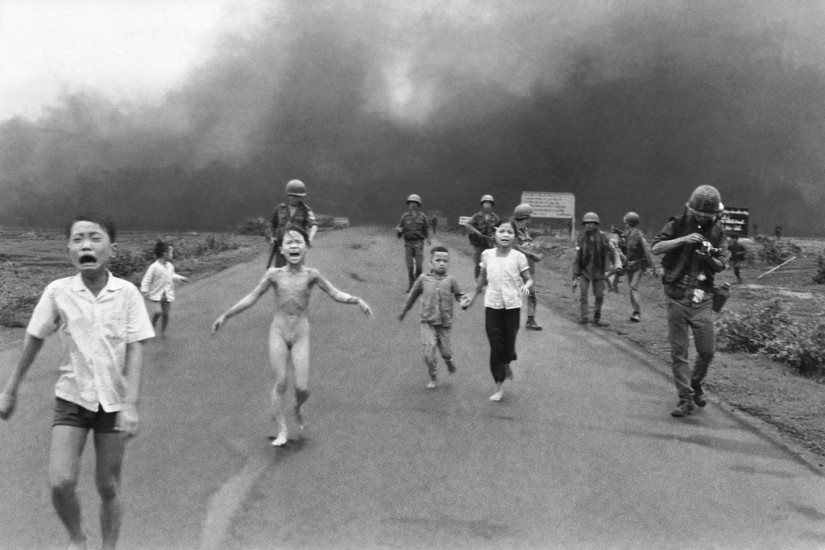When I first saw the napalm explosion, I didn’t think there were any civilians in the village. Four napalm bombs were dropped. In the previous two days, thousands of refugees had already fled the village. Then I started to see people come out of the fireball and smoke. I picked up my Nikon camera with a 300mm and started shooting. As they got closer I switched to my Leica. First there was a grandmother carrying a baby who died in front of my camera. Then I saw through the viewfinder of my Leica, the naked girl running. I thought, “Oh my God. What happened? The girl has no clothes.” I kept shooting with my Leica M2 with my 35-mm. f2 lens. That camera is now in the Newseum in Washington.
I took almost a roll of Tri-x film of her then I saw her skin coming off and I stopped taking pictures. I didn’t want her to die. I wanted to help her. I put my cameras down on the road. We poured water over this young girl. Her name was Kim Phuc. She kept yelling “nóng quá” (Too hot). We were all in shock.
Her uncle [asked if I would take all the children to the hospital]. I knew she would die soon if I didn’t help. I immediately said, “Yes.” Kim kept screaming, “I’m dying! I’m dying!” Her body was burned so badly. All her tears were coming out. I was sure she was going to die any minute in my car. When we arrived at the hospital in Cu Chi, nobody wanted to help her because there were so many wounded soldiers and civilians already there. The local hospital was too small. They asked me, “Can you take all the children to the hospital in Saigon?” I said, “No. She’s going to die any minute right here.” I showed them my AP media pass and said, “If one of them dies you’ll be in trouble.” Then they brought Kim Phuc inside first because she was so badly wounded. Then I went back to develop my film at the AP office in Saigon.
